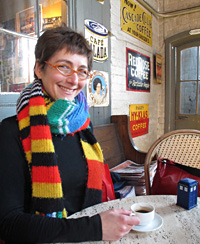A couple of weeks ago I ran a web seminar on the topic of Math for Knitters.
Topics I covered included:
- Yarn shop math: how to make sure you're buying enough yarn for your project.
- Pattern math: gauge math; repeats and how to deal with numbers-intensive instructions in your project, like "decrease five sts evenly across; and the dreaded 'Reversing Shapings' and 'At the Same Time'.
- Project math: how to figure out how long it will take you to finish your project, how to figure out if you have enough yarn, how to figure out how long you can make your scarf.
Math for Knitters Part Two runs Wednesday December 10th at 1pm EST.
In this session, I'll be diving deep into gauge, providing you a good understanding of what it's all about: why it matters, how to check, it, and what to do if you can't match it.
I'll talk about adjusting patterns for gauge: how to do it, and when not to. We'll talk about garment adjustments - how to easily modify a garment to improve the fit.
Although I know that I love the math, not everyone else does, so many of my solutions are about keeping the number-crunching to a minimum.
This session will make you a smarter shopper: I'll help you figure out how to choose patterns that are easiest to modify. And then I'll show you how to make those modifications to get exactly the result you want!
If you love math, this class is for you - I'll empower you to adjust and modify patterns to your needs! And if you don't love math, this class is for you - I'll show you how to avoid it as much as possible, while still making adjustments.
Register here. Again, it will be recorded so if you can't make it live you can listen to it later. And heck, even if you are able to listen to it live, you can listen again and again!








